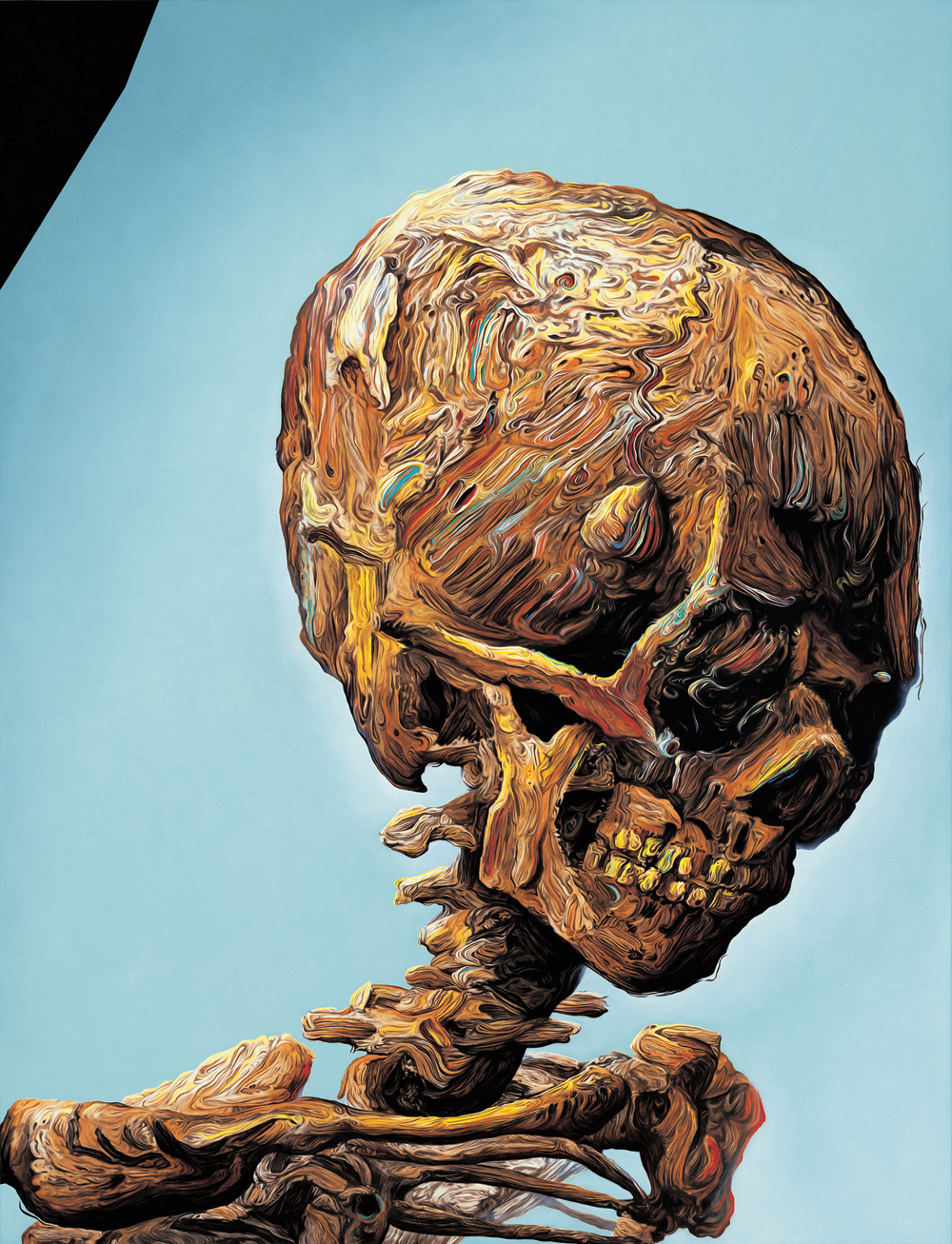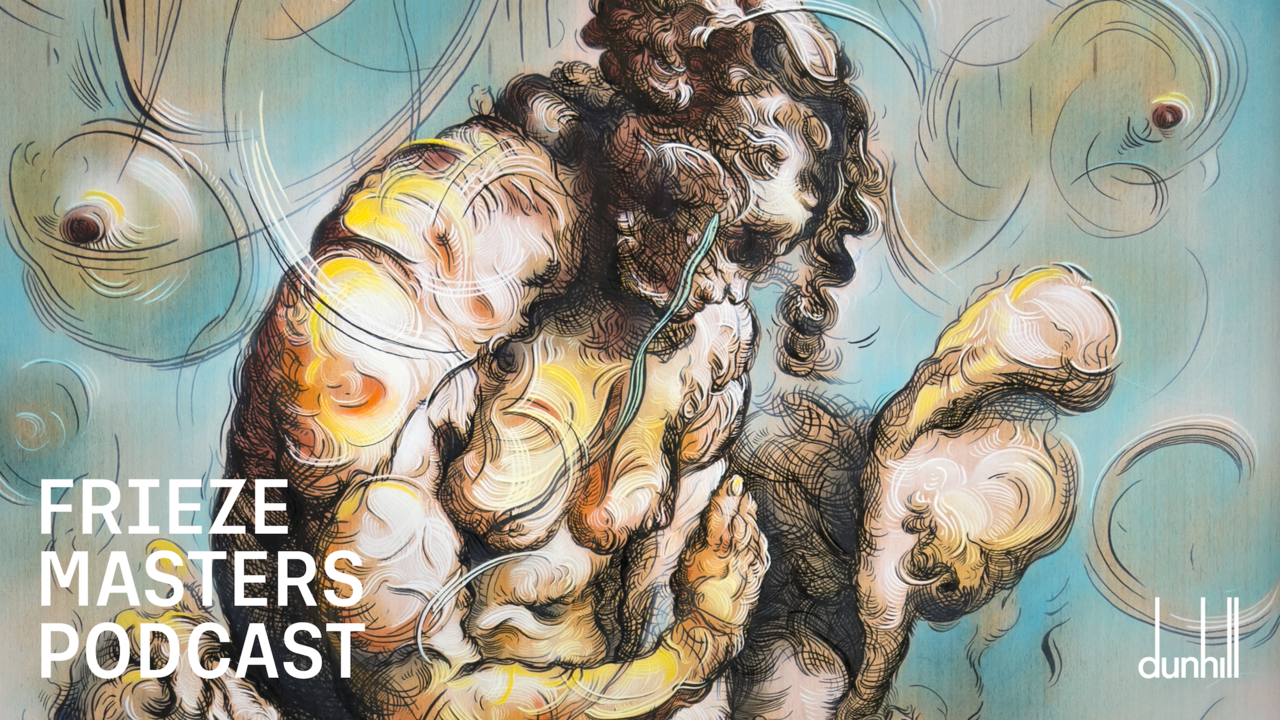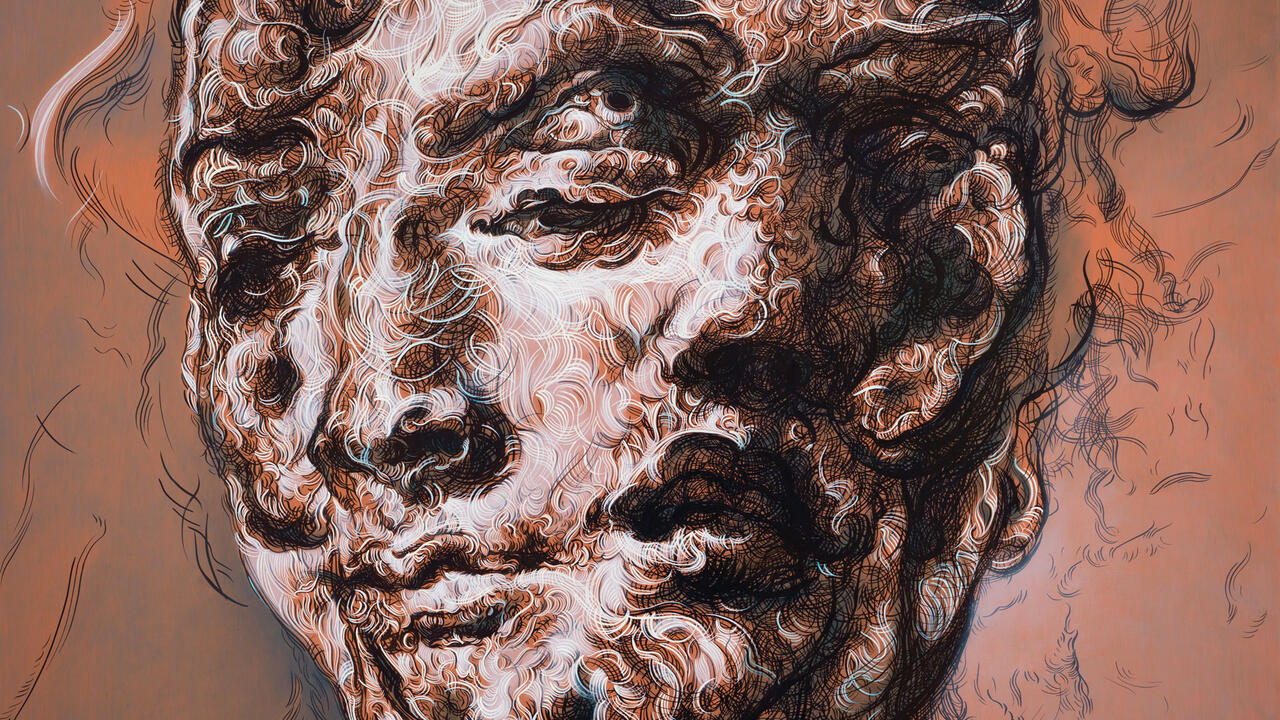Glenn Brown
Tate Liverpool, UK
Tate Liverpool, UK

Mark Twain once suggested that we ought to start out dead and live our lives in the foreknowledge of extinction. If anyone’s art was born dead, managed to die still further, and came to self-conscious and enhanced life later, it is Glenn Brown’s. Back in the early 1990s, as we’re reminded by this 60-work retrospective’s almost throwaway anteroom devoted to his earliest canvases, the British painter’s art was a virtuosic, frigid product of debates about painting’s demise. Those screen-like trompe l’oeil versions of Frank Auerbach’s painterly valleys and Karel Appel’s tube-fresh impasto blurts were strutting demonstration pieces: the eschatological combustions of a young man, not quite as smart as he imagines, apparently thrilled both by his own prodigious skill and to be witnessing, at first hand, the end times.
He did it, he did it again, he did it too long. Want to see the brick wall? Here’s Brown, in 1999, with Oscillate Wildly (After ‘Autumnal Cannibalism’ 1936 by Salvador Dalí), a stretched-on-the-horizontal, black and white redraft of the Catalan’s canvas that reminds us, again, that Brown was painting in the age of reproductions, revelling in (and asserting fragile ownership through) flaws of transmission. It is knowing self-cannibalism at best, millennial atavism’s equivalent of the dry heaves. The associable relativism Brown was rehearsing with his indie-music-touchstone titles and blow-ups of sci-fi book covers, meanwhile, and conflation of their epic mode with that of artists such as John Martin, also feels faintly rote by this stage, even as the paintings (a quartet of which flashily opens the show) retain an irreducible dorky grandeur. End of act one, with the stone closing over the cave.
Presumably around the century’s turn, however, Brown began composing at one remove, fiddling creatively with his sources in Photoshop. Other things might change in the painting process, but the consequent situation of his art-historical figures in soft, deep, unearthly space, their edges blurring as in shallow photographic focus – like those seen in, say, Mark E. Smith as Pope Innocent X (1999) - feels newly digital. (Messing with flatness and depth, it also balances the sculpted lumps of paint, bulgingly applied to wire armatures or plaster, that Brown began making in the mid-’90s, curiously ignorable here.) These paintings additionally suggest, for the first time, the construction of an ambiguous elsewhere, with enough melancholy morbidity contained in it to run along the already-laid rails of the artist’s career, enough weird sentience, emotion without gesture and irreducible friction between the constituent parts to keep him, and us, intrigued. In interviews, Brown adumbrates painting with a fan’s love – he knows when, and why, his eyeballs are towed helplessly around a canvas – and it’s from here that his work increasingly privileges both the simple pleasures of looking and the pre-linguistic pull of major, lasting art.
Increasingly, Brown has fused his interstellar and high-art syntaxes, perhaps because they mesh so unnervingly and obtusely. Around 2003, his manner of painting flesh changes, taking on the gaseous swirl of the unearthly atmosphere found in earlier, overblown fantasy landscape panoramas such as Jesus; The Living Dead (after ‘Europa’ by Adolf Schaller) (1998), seeming to be perpetually at the brink of dissolution – or new, unstable birth. That’s the texture of the ruff and blue face of the elongated milk-eyed Elizabethan figure one can see in the nacreous Sex (2003). It’s a painting both crushed and jovial (the figure, like a number of Brown’s from this period, sports a red nose): an iconographic equation of sorts, raising the possibility of a horribly antic afterlife for us. The dandyish youth with the liquefied green face, golden teeth, red lipstick and red eyes in The Great Masturbator (2006) points to us, confirming our place in it. B
rown is a legitimately strange, nearly surrealist painter now, working with an iconography of softened and distended forms: I don’t think I’ve ever seen a retrospective that felt timed in case, one year from now, everything in the work may have dissolved into mush. Such, though, is the presiding implication of a painting like Burlesque (2008), a still life-in-landscape of fetid viridian sacks or vegetation, marooned in another green world – or Polichinelle (2007) which looks, possibly, like a figure eating a rooster whole and alive (tail first) after both have been flayed and irradiated. If language dances puckishly ahead of me here, it’s a testimony to Brown’s brilliantly wayward and slippery maturation. I doubt he has words for them either.






















